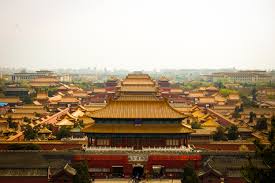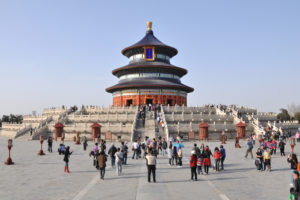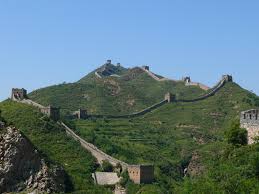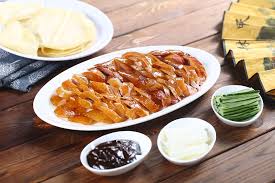History
Prehistoric – first settlements:
– Located 50km southwest of the current center, dated back to 700.000 years ago
– Inhabitants became known as Beijing-people; many tools made from stone and bones were discovered
Timespan until Yuan dynastic came into power
…-1000 B.C. the city was called “Ji” and first mentioned in documents. It was a center of commerce, trading with Mongolia, Korea and various tribes from Shandong and central china.
475-221 B.C. “Yanjing” was the new name and the capital of the nation called “Yan”
259-210 B.C., when fighting for power emperor “Qin Shihuangdi” occupied the city
After 221 B.C., during the Qin-Dynasty, the name was changed back to “Ji”. The city was no longer the capital of an empire and turned into an unimportant local town
916 – 1125, during the Liao-Dynasty the city regained some of its former importance
1153 – 1215 the “Jurchs” conquered the city and renamed it into “Zhongdu” (“central capital”). They redeveloped it to a splendid city by using 100.000 slave labourers
In 1215 Dschingis Khan conquered and plundered the city and burned it down.
During the Mongolian Yuan-Dynasty (1271-1368)
- Under “Kublai Khan” the city is redeveloped and became the capital “Yuan”, also known as “Dadu”.
- Due to its location at the end of the side road, it became very wealthy.
- By using the side road many Europeans visited “Yuan”
Further development of power during the Ming (starting 1368)- and Qing (starting 1644)-Dynasties
- 1408 the city was renamed “Beijing” and reconstruction started.
- The “Forbidden City” and the “Temple of Heavan” were built.
- 1421 it becomes the capital of the Ming-Dynasty
- During the Qing-Dynasty many new temples and palaces were added
- The city had its heyday in the first half of the 18th century, when the “Summer Palace” was built. Together with the emperors palace they formed the symbol of the Chinese power and glory.
Beijing after the resignation of the „Mandschu“
- In 1912 the Mandschu resigned and the Republic of China was founded.
- Beijing stays the political center of China until 1928, when Nanjing become the the capital of China
- 1937 – 1945 the city is occupied by the Japanese army
Taking over of control of power by the Communist Party
– On October 1st, 1949, the People’s Republic of China is founded with Beijing as its new capital
– The new government reformed the country thoroughly and planned to convert Beijing into a modern capital. Historic building were demolished or used in a new way, e.g. temples were converted into for instance factories. 20 years after 1940 only 150 of formerly 8.000 remained.
– Protests were not accepted and in many cases put down by force.
Unesco World Heritage Locations
The forbidden city
– A protected palace city as the center of power within Beijing where the emperors of the Ming- and Qing Dynasties lived together with ministers, their relatives and servants. This lasted until 1911.
– Access for “normal” people was forbidden.

The imperial gravesites of the Ming
– It is the biggest burial site of the Ming, constructed 1409 – 1427 under emperor “Yongle”
– After the death of his wife in 1407 he chose this location for his “Changling-Mausoleum”
– Until the break-down of the Ming-Dynasty 13 emperors were buried there
The Temple of Heaven
– A temple site located to the south of Beijing, surrounded by a double row of walls.
– Masterpieces of architecture and landscape gardening, which influenced other East Asian cultures.
– The emperors of the Ming- and Qing dynasties prayed there for good harvests.

New Summer Palace
– It is the emperor palace located in Northwestern direction of Beijing, a few hundred meters away from the ruins of the destroyed former Summer Palace.
– Even though it was rebuilt a few times it represents one of the highlights of Chinese gardening architecture.
The Great Wall
– Construction started in the 7th century B.C.
– It is a system of a historic fortification of the borders by various walls. Their purpose was to protect the population from attacks and raids by equestrian of nomadic tribes living in northern territories.
– It has a total length of 21.196 km and consists of 43.721 objects at various Locations

Beijing as a cultural center
Chinese kitchen – the Peking duck
– This dish is famous all over the world and its preparation is very sophisticated
– The recipe dates back to the Ming-dynasty

Peking-Opera
– It combines various artistic elements, like singing, dancing and martial arts
– It uses symbolic rather than real elements and the set-up is sparse.
– It came to Beijing from the provinces Anhui, Hubei und Shaanxi in 1790
Calligraphy
– This kind of art is closely related to the art of Chinese painting. Many famous calligraphs also were well-known painters.
– Special writing brushes, Chinese ink, a special grinding stone and paper are used.
– Eight principles form the basics of Chinese calligraphy:
dots, as well as diagonal-, straight-, hooked-, lifted-, inclined-, chipped and pushed forward lines
Porcelain
– It was first manufactured around 100-200 A.D. and is also called “Chinaware”. It’s an imminent part of Chinese arts and culture
– It was the prototype for the development of manufacturing of porcelain in Europe
– After forming it is dried, glazed, dried again and then blazed.
die Brennung
Martial Arts
– Most common are “Kung Fu“ and “Wushu“ styles.
– Most styles origin from the martial arts of the Shaolin- or Taoist- monks from the Wudan mountains.
– For becoming an expert it takes decades and children as young as 5 years start with trainings in camps.
(Annika Steinebrunner; Sara Bitala)
